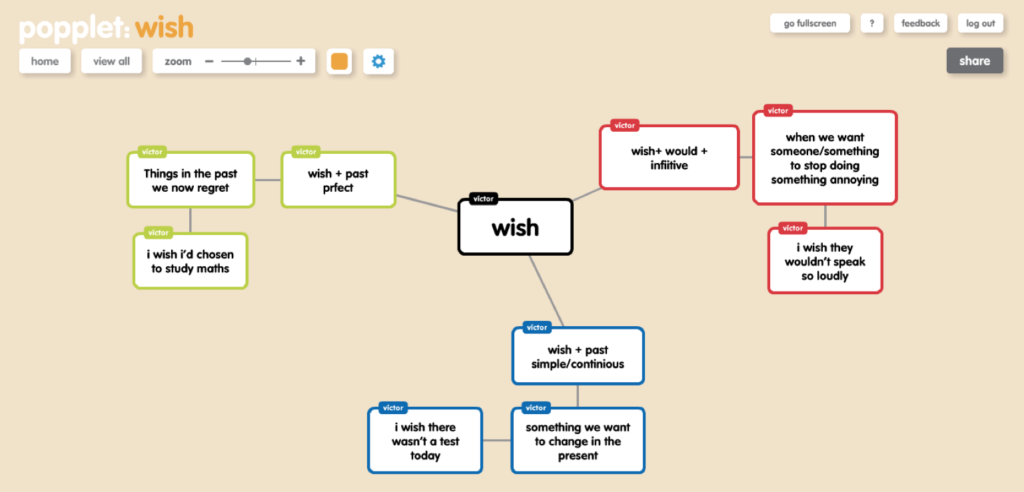Few areas have produced more debate in the field of English language learning than that of grammar instruction. What most language teachers agree on is that at some point language learners fare far better if they develop a firm grasp of the working rules that govern the use of the English language.
Where language professionals might differ is in “how” to teach grammar. Traditional methods initially used to teach Latin and Greek, consisted of learning grammar tables and rules by rote, and included a lot of painful repetition, which students rarely remember fondly. As for their effectiveness, since 17th & 18th-century learners were never expected to actually speak these ancient languages, it’s hard to say. Most would certainly remember verb conjugations for the rest of their lives!
With the popularity of modern languages such as English and the possibility of actually being able to speak the language being learned, methods gradually changed, albeit surprisingly slowly. Nowadays, a more communicative approach is favored in most language learning classrooms, and the emphasis on a precise knowledge of grammar is much more relaxed.
Teaching Grammar with Popplet
In the digital age, how can English language teachers best deliver a grammar lesson? It’s true, a communicative approach has many benefits, but at some point, there will always be a grammar reference, a handout, or a physical presentation with attendant scribbling – having a record and knowing the rules simply makes sense. However, for some students, this is where learning English tends to become boring and difficult, a bit like those mechanical grammar lessons of old. Younger students especially, don’t appreciate the repetition and their attention drifts. This is where introducing Popplet into a lesson can make a difference.
Popplet’s attractive and accessible interface immediately dispels any fears that may lurk in the hearts of learners (and some educators!) that a particular grammar activity could be in any way boring. The promise of technology in a grammar lesson results in the ultimate make-over, and students who might once have been lackluster at the mere mention of verb tables quickly become pleasantly enthusiastic. There are even a number of different ways to use Popplet in a grammar lesson.
Modelling
To introduce learners to grammar lessons with Popplet, model how to create a Grammar Popplet. This is a good way to deliver a grammar lesson and introduce students to Popplet at the same time. This popplet on “Word Order in Questions in the Simple Tenses” is a good example. The teacher can begin the work, and the students can finish it.
Grammar Reference Popplets
Simply present or give students a copy of the relevant grammar rules and tables, give them some time to study them, then have them make a Popplet. This may seem like one of the repetitive methods mentioned previously, but it really isn’t. Try it and you will see that this type of exercise breathes life into what could be a lifeless lesson. Learners respond positively to this more visual, and therefore memorable experience complete with colors, connections, and creativity. Students can even build on their work by adding example sentences as in this popplet of “The Correct Uses of Wish”:

Contextual Grammar Popplets
Once a lesson has been taught and students have had the opportunity to complete some challenging examples, Grammar Reference Popplets like the ones above can be embellished by the addition of multiple, contextual examples. This allows for practice, and for a demonstration of learning and is an opportunity for teachers to assess how much of a grasp learners have of a grammar point. This activity also will highlight any weaknesses and errors, which can be clearly visualized and corrected. At this point, students can also learn to collaborate on their work, as a class exercise or as a homework assignment. The following popplet is the result of a group homework assignment on “Verb Patterns”:
Revision
Grammar and vocabulary are usually first on the list for study when exam time comes around for ESL students. Grammar Popplets, created throughout the course of their studies, provide them with an accessible, visual record for revision. Not simply a list of rules, a table, or group of examples, but all of these things and more. Highly effective and not boring in any way! Check out the second part of the “Verb Patterns” assignment:
Teaching English is rewarding and fun, and the ESL classroom should be a dynamic environment. However, as with every subject, there are certain areas that students find difficult, which create friction between student and teacher, reduce effectiveness and form blocks to learning. Grammar is often one of those areas. Good teachers strive to find ways to reduce this friction and create more opportunities for their students to progress. Using Popplet in the ESL classroom is one way to do this.
Are you using Popplet in your English class? If you are, you can share your work with us and our community on Twitter, and on our Facebook page.
Popplet is available on the web, and as an iOS app for the iPad and iPhone. New web users will receive ten popplet boards when they sign up for a free account. Be sure to check out Popplet’s reduced rates for School and Class group subscriptions.
The other articles in this ESL series are:
Popplet Ideas for ESL Teaching
Popplet ESL Activities: An Introduction to Pronunciation
Popplet ESL Activities: Irregular Verb Flash Cards
Popplet ESL Activities: Vocabulary Building (1)